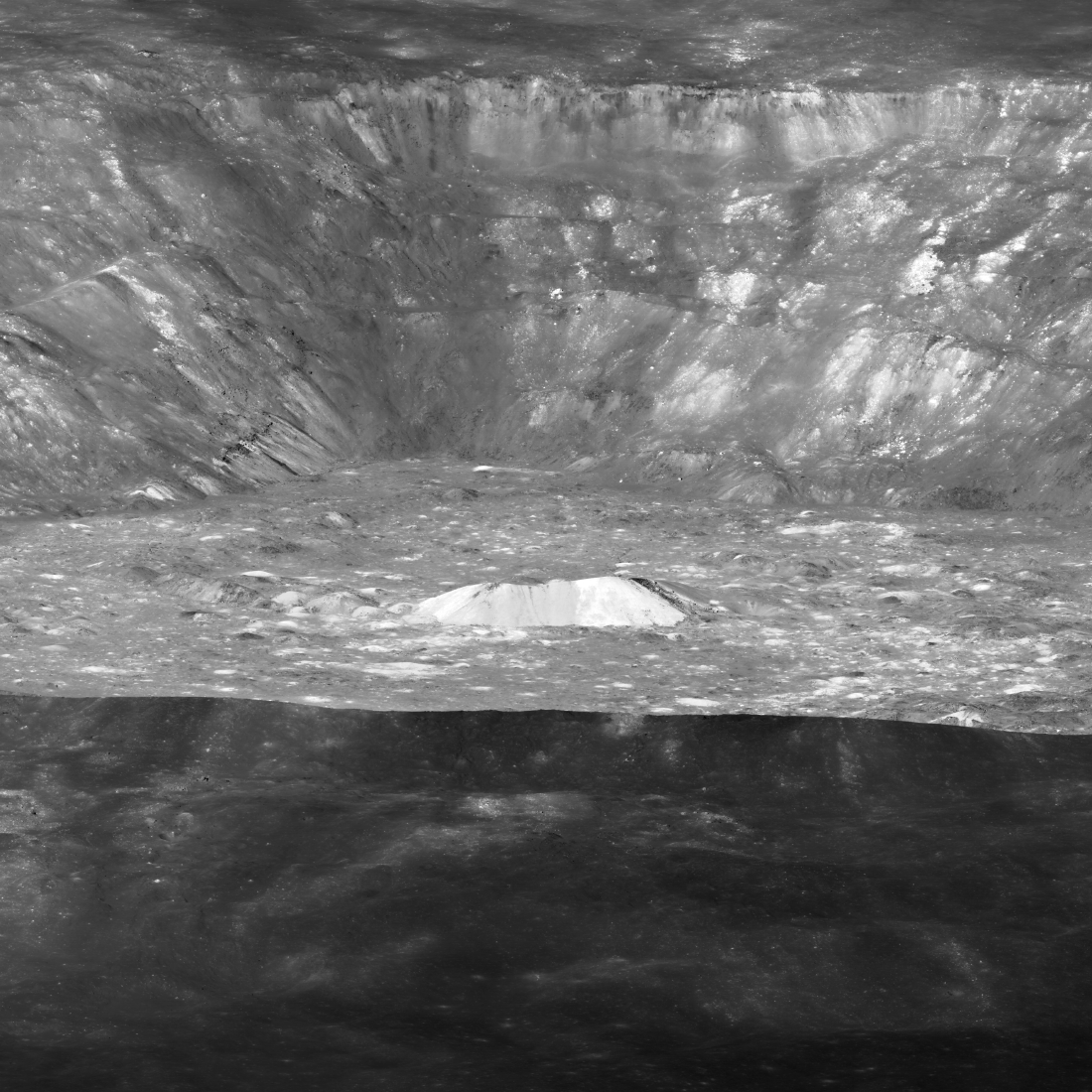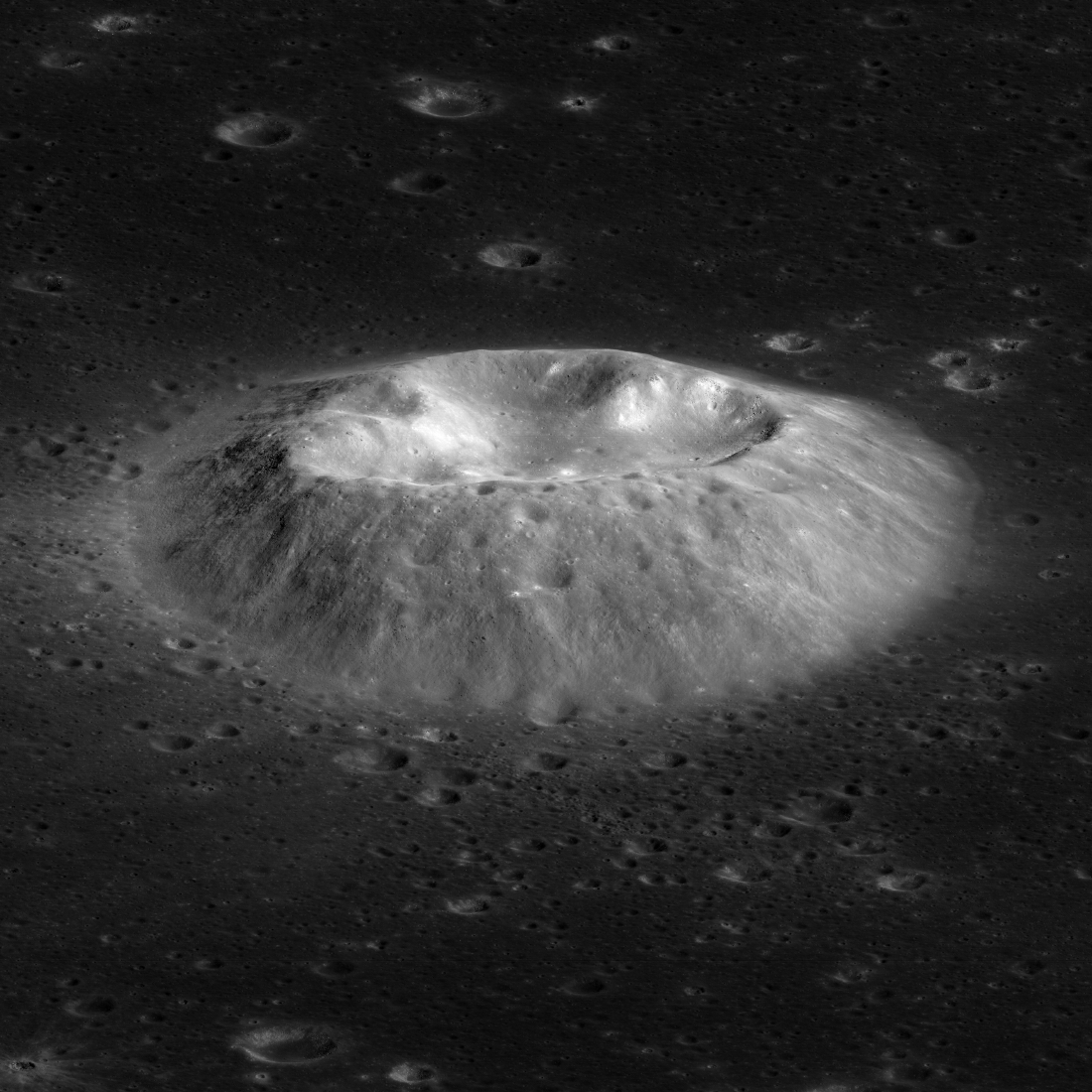Featured Images

Mons Rümker and the Moon's Volcanic Past
NAC regional mosaic composed of 10 images showing Mons Rümker and the surrounding mare surface. Images acquired between 2012-06-03 to 2016-04-21. Image width is 299 kilometers, centered at 40.80°N, 301.43°E [NASA/GSFC/Arizona State...
Published on 12 Apr 2025

Young Volcanism?
Enigmatic landform proposed to have formed from relatively young volcanic activity. NAC M1453037761LR, acquired 2023-11-27, incidence angle 71°, slew angle 43°, phase angle 116°, spacecraft altitude 89 km, north is up, image width...
Published on 18 Oct 2024

A Lunar Island Surrounded by Lava
Color-shaded relief map showing the elevations of the Western Crisium Kipuka (WCK) located on the western edge of Mare Crisium. The elevation ranges from -4,218 m (blue) to -3,195 m (red) [NASA/GSFC/Arizona State University].
Published on 01 Apr 2024

Gruithuisen: Collapsed Lava Tube?
The spectacular sinuous landform shown above is thought to be a collapsed lava tube (34.7°N, 316.6°E), located near Gruithuisen K crater. NAC controlled mosaic containing images M1173350480L/R, M1173357586L/R [NASA/GSFC/Arizona...
Published on 06 Oct 2023

Dramatic Contrast
The dark rim of Aristarchus crater (23.7°N, 312.5°E) dramatically highlights its bright interior and central peak. There are more than 2700 meters of relief from the rim to the crater floor, and the central peak is 3,000 meters wide...
Published on 01 Dec 2022

Silicic Volcanoes on the Moon
The silicic volcano Mairan T (41.79°N, 311.61°E) stands over 600 meters tall and in stark albedo contrast to the surrounding dark mare basalts of Oceanus Procellarum. The view is from west-to-east, scene is 6.6 kilometers wide, NAC...
Published on 11 Oct 2022

Lunar Terminator
Western portion of Mare Moscoviense seen under extreme lighting, east-to-west view snapped 25 August 2019. The illuminated rim in the background is an unnamed crater 21 kilometers in diameter (24.2°N, 146.3°E); spacecraft altitude was...
Published on 15 Apr 2022

Schrödinger Vent - A Region Rich with Lunar Treats
A digital terrain model (DTM) mosaic of the Schrödinger pyroclastic vent (centered at -75.27°N, 139.29°E - here in Quickmap ) located on the floor of Schrödinger basin where the elevation is relative to the average radius of the...
Published on 04 Mar 2022

NAC Anaglyph: Alphonsus Vent
A dike (subsurface magma body) was likely intruded under the floor of Alphonsus crater creating an array of fractures seen here. Image is 5700 meters wide, north is towards the top [NASA/GSFC/Arizona State University].
Published on 19 Feb 2022

Gruithuisen Domes: A Lunar Mystery
NASA is planning to send a lander and rover to the beautiful Gruithuisen Domes, seen in this controlled mosaic, and LROC images will help guide the way. The domes are located at 36.3° N, 319.8° E. Image 55 km wide, north is up...
Published on 14 Oct 2021

IMPs: Young Lunar Volcanism?
Irregular Mare Patch located inside Sosigenes Crater (8.7° N, 17.5° E), approximately 17 km across. NAC controlled mosaic containing images M1264703188L/R, M1264710221L/R, and M1264717254L/R [NASA/GSFC/Arizona State University].
Published on 24 Feb 2021

Happy Halloween from the Moon
Happy Halloween from the Moon! This smiling jack-o'-lantern shaped crater is Gauss W. Formed by volcanic activity and cratering, check out this festive featured image! Gauss W Crater (34.62° S, 80.82° E) is 18.5 km across; NAC...
Published on 29 Oct 2020

A Lunar Donut: Bell E Crater
Bell E Crater (22.06° N , 264.06° E; ~16 km diameter) controlled feature mosaic made from images M1139534784L/R & M1139527672L/R [NASA/GSFC/Arizona State University].
Published on 02 Oct 2020

Apennine Bench Formation: A Window into Ancient Volcanism
LROC Wide Angle Camera (WAC) 100 m/px mosaic with 6 colorized Digital Terrain Models (DTMs) of the Apennine Bench Formation (centered near 26° N, 356° E - here in Quickmap), an enigmatic light plains unit located on the central lunar...
Published on 29 Jun 2020

Feature Mosaics: Behind the Seams
A seamless mosaic of a portion of Karpinsky crater (91 km diameter, 72.61° N, 166.80°E) seamless mosaic. Scene is 55 km across, NAC images M1309496597L/R, M1309503618L/R, M1309510644L/R, M1309517669L/R, and M1309524696L/R...
Published on 16 Mar 2020

Mysteries of Compton Crater
The oblique view of part of the north-central floor of Compton crater (center lat 55.9°, center lon 104.1°) shows floor fractures, the north slopes of its central peaks (center right), thousands of impact craters (some less than a meter...
Published on 10 Apr 2019

The West Side of Plato Crater
Western Plato crater (at right) and the geologically complex region west of its rim — part of a controlled and corrected mosaic made up of Lunar Reconnaissance Orbiter Camera (LROC) Narrow Angle Camera (NAC) images. The late afternoon...
Published on 18 Jan 2019
Von Kármán Crater: Awaiting A Visitor
Von Kármán crater (186 kilometer diameter), a treasure house of geologic landforms! LROC Wide Angle Camera mosaic, five degree latitude and longitude grid [NASA/GSFC/Arizona State University].
Published on 02 Jan 2019
Fractured Crater
Interior of Komarov crater (24.59°N, 152.25°E; 85 kilometers diameter), near the southern edge of Mare Moscoviense, on the lunar farside. Image 15 km wide across center, LROC NAC M1263901757LR [NASA/GSFC/Arizona State University].
Published on 15 Nov 2018

John Young at South Ray Crater
Overhead view of South Ray crater, the most prominent feature at the Apollo 16 Descartes landing site in the central lunar highlands. Astronaut John Young landed Lunar Module Orion north of the crater on 21 April 1972 (UTC)....
Published on 05 Jul 2018